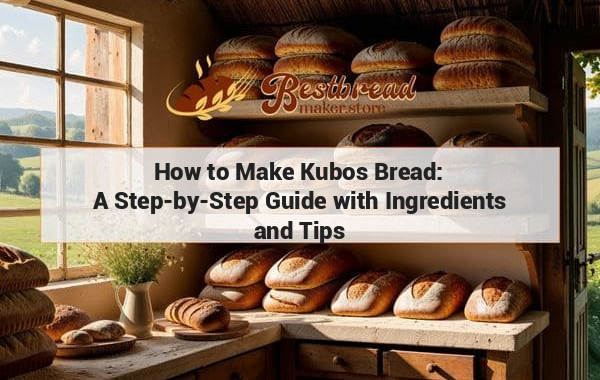How to Make Cassava Bread: A Step-by-Step Guide
To make cassava bread, start by peeling and grating cassava root. Squeeze out excess liquid, then mix with salt and any desired seasonings. Flatten the mixture on a baking sheet and bake until crispy. Enjoy this gluten-free alternative to regular bread!
How to Make Cassava Bread: A Comprehensive Guide
Cassava bread, a delicious and gluten-free alternative to traditional bread, is made from the root of the cassava plant. This guide will walk you through the steps on how to make this traditional dish at home.
Key Takeaways: Cassava bread is a simple and nutritious recipe made from cassava root, perfect for gluten-free diets. Following a few key steps—peeling, grating, and baking—results in a delicious homemade bread option.
Understanding Cassava Bread
Cassava bread is made from cassava root, a starchy tuber native to South America but widely grown in many tropical regions. Its gluten-free nature makes it suitable for those with dietary restrictions, and it’s a versatile option for various meals. Traditionally, cassava bread has been a staple in indigenous diets and is now popular for its health benefits and unique texture.
The Importance of Cassava Bread in Traditional Cuisine
Cassava bread holds cultural significance, especially in South American and Caribbean cuisines. In these regions, it's often prepared as a flatbread, using minimal ingredients and cooked on a griddle. The bread’s versatility allows it to be used for various meals, whether as a side dish or as a wrap for meats and vegetables.
How to Make Cassava Bread: Step-by-Step Guide
Ingredients Needed
- Fresh cassava roots (about 2-3 medium-sized)
- Salt (to taste)
- Optional: coconut oil or butter for additional flavor
Step 1: Preparing the Cassava
To begin, peel the cassava roots carefully, ensuring all the brown skin and any tough parts are removed. After peeling, wash the cassava thoroughly. Grate the cassava using a fine grater, and if you prefer a smoother texture, you can use a food processor.
Step 2: Removing Excess Moisture
Cassava contains a lot of water, so it’s important to squeeze out as much moisture as possible. Using a cheesecloth or a clean kitchen towel, place the grated cassava in the cloth and twist it tightly until most of the liquid is drained. This step is crucial to achieve the right texture for the bread.
Step 3: Forming the Dough
Once the cassava is prepared, transfer it to a bowl. Add a pinch of salt, and mix well. If you prefer a richer flavor, incorporate a tablespoon of melted coconut oil or butter. The consistency should be dough-like but not too sticky.
Step 4: Cooking the Cassava Bread
Preheat a non-stick pan or griddle over medium heat. Divide the dough into small balls, flattening each into a thin, round shape—similar to a tortilla. Cook the bread for about 3-5 minutes on each side, or until golden brown. For an extra crispy texture, press down on the bread while cooking.
Variations and Serving Suggestions
There are multiple ways to enjoy cassava bread. You can serve it plain, or for extra flavor, try brushing the bread with melted butter or olive oil. It can be paired with a variety of dishes, such as grilled meats, stews, or even fresh salads. You can also add toppings like grated cheese or herbs before cooking for a gourmet twist.
Nutritional Benefits of Cassava Bread
Cassava is not only a delicious base for bread but also packed with nutritional benefits. It's a great source of carbohydrates and provides essential vitamins and minerals such as vitamin C, potassium, and magnesium. Its gluten-free nature also makes it ideal for those with celiac disease or gluten sensitivity.
How to Store Cassava Bread
Cassava bread is best eaten fresh, but if you have leftovers, store them in an airtight container in the refrigerator for up to three days. To reheat, simply place the bread on a pan for a few minutes or microwave it briefly.
Choosing the Best Bread Maker for Your Needs
If you’re interested in making cassava bread frequently or want to explore other bread types, investing in a high-quality bread maker is a smart choice. Bread makers not only save time but also offer consistent results, ensuring your bread is perfectly baked every time. For more recommendations on top bread makers, check out bestbreadmaker.store—a trusted source for finding the best bread-making machines tailored to your needs.
Frequently Asked Questions (FAQs)
1. Can I make cassava bread without a bread maker?
Yes, cassava bread is traditionally made without a bread maker. It’s typically cooked on a griddle or pan, allowing you to control the texture and crispiness.
2. Is cassava bread gluten-free?
Absolutely! Cassava bread is naturally gluten-free, making it an excellent alternative for those with gluten intolerance or celiac disease.
3. How can I add more flavor to my cassava bread?
To enhance the flavor, you can add ingredients like shredded coconut, herbs, or spices to the dough. Additionally, brushing the bread with garlic butter before serving adds a delicious twist.
4. Can I freeze cassava bread?
Yes, you can freeze cassava bread. Allow it to cool completely, then wrap it tightly in plastic wrap or place it in a freezer bag. Reheat in a pan or oven directly from frozen for best results.
5. What are the health benefits of cassava bread?
Cassava bread is a source of energy-rich carbohydrates and essential nutrients like vitamin C. It’s also naturally gluten-free, making it suitable for various dietary needs.
Cassava bread is not only simple to make but also offers a delicious and healthy alternative to traditional bread. Whether you cook it on a griddle or choose to explore more advanced methods using a bread maker, you’re guaranteed a flavorful and nutritious result. Remember, if you’re searching for a reliable bread maker, visit bestbreadmaker.store for expert advice and reviews.








